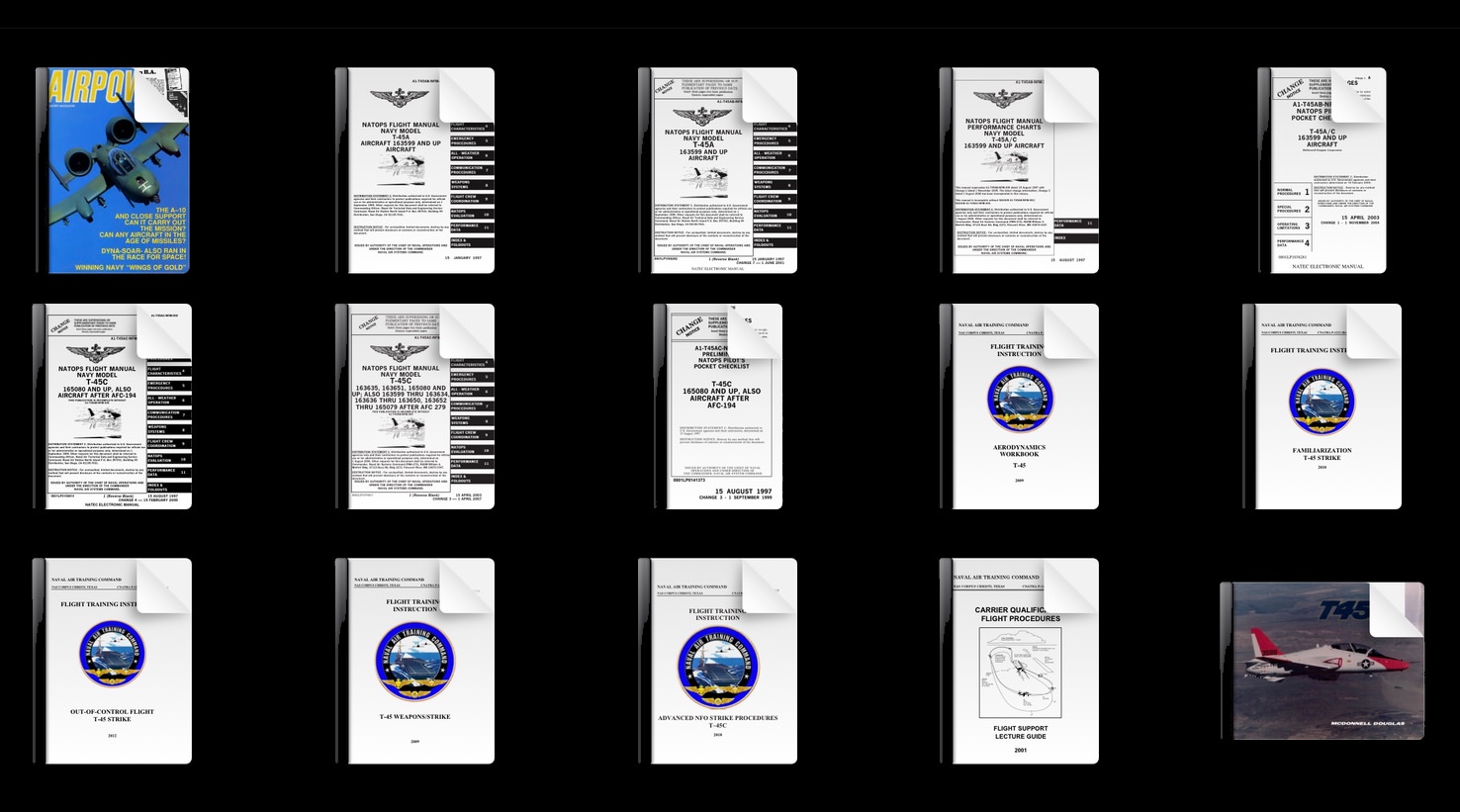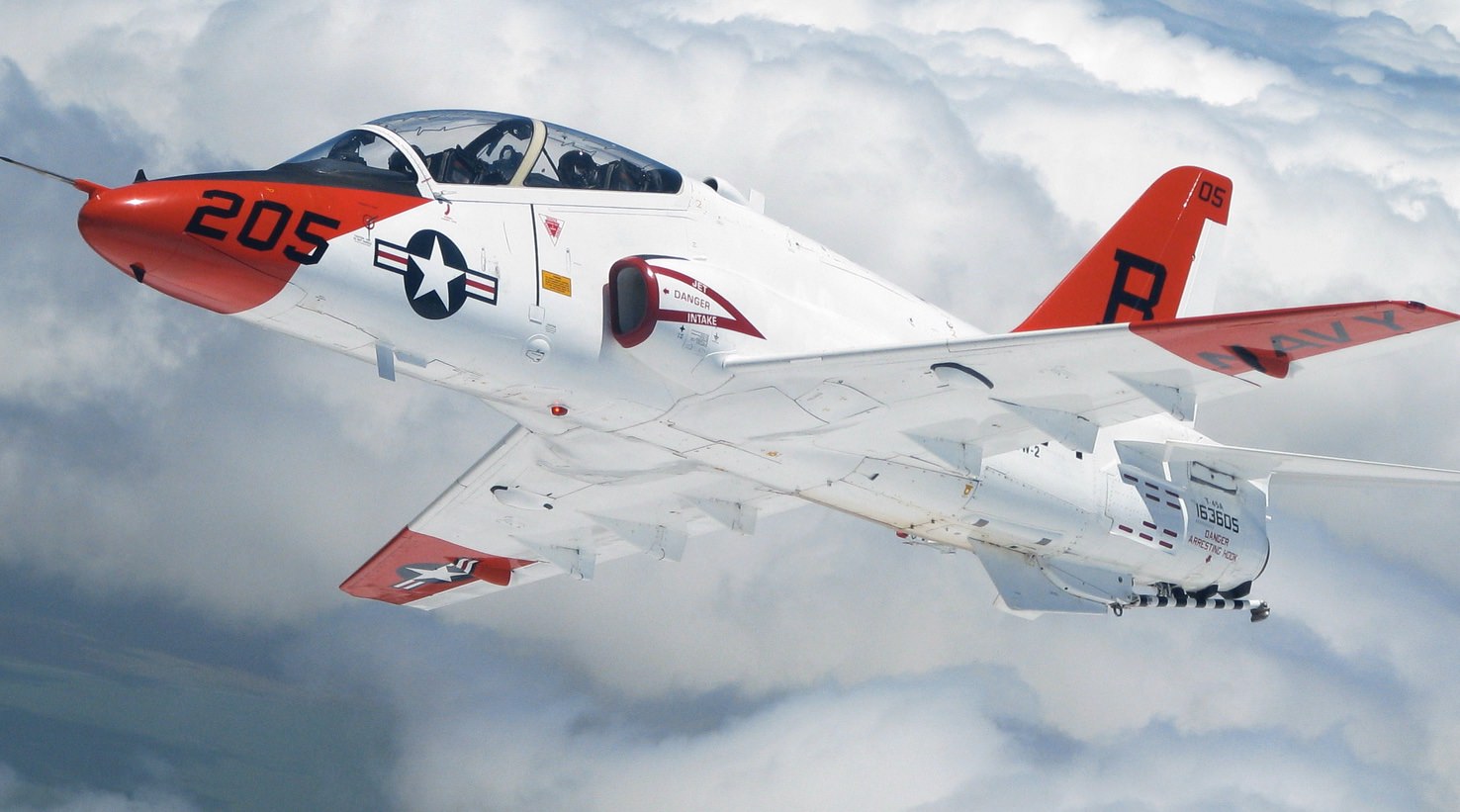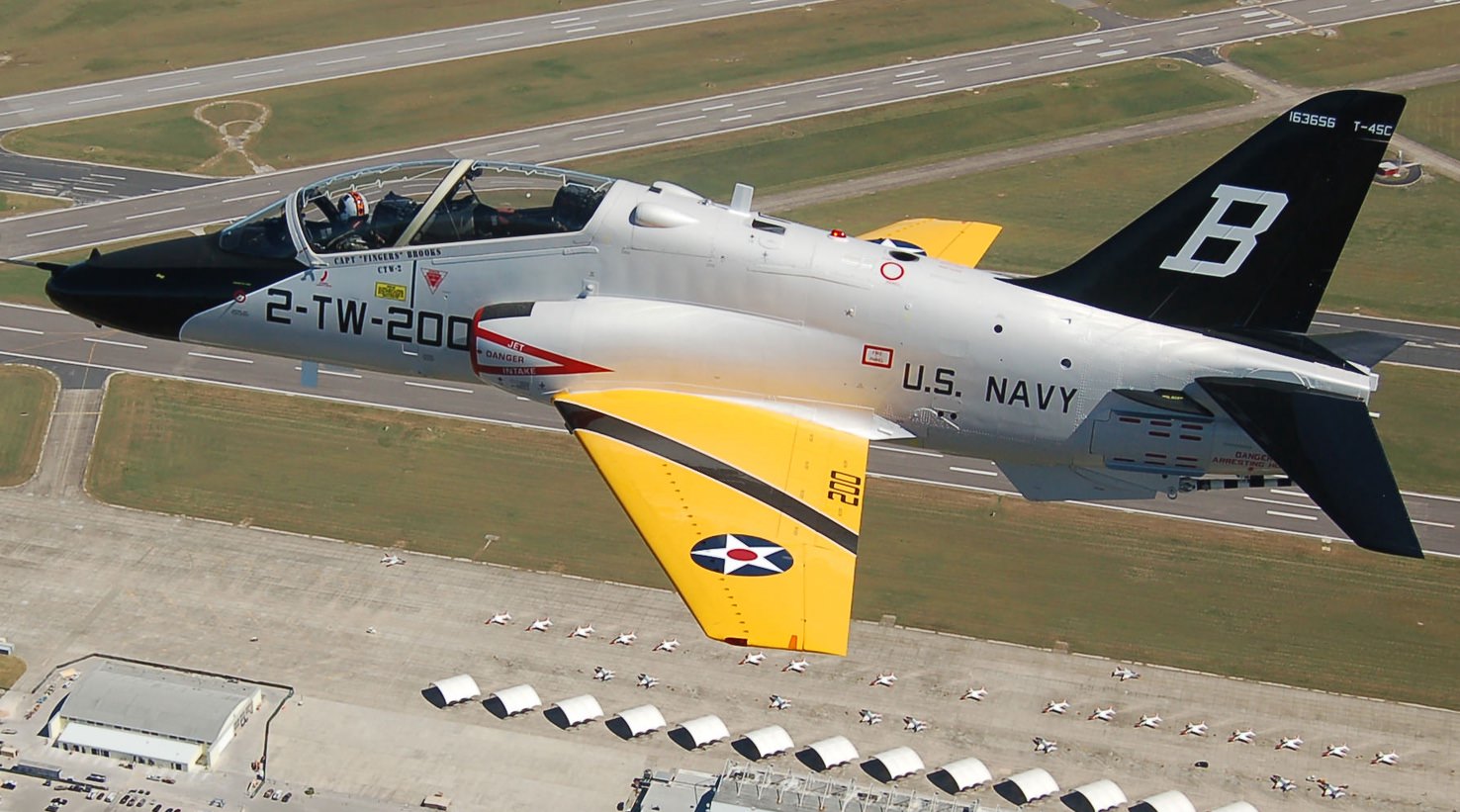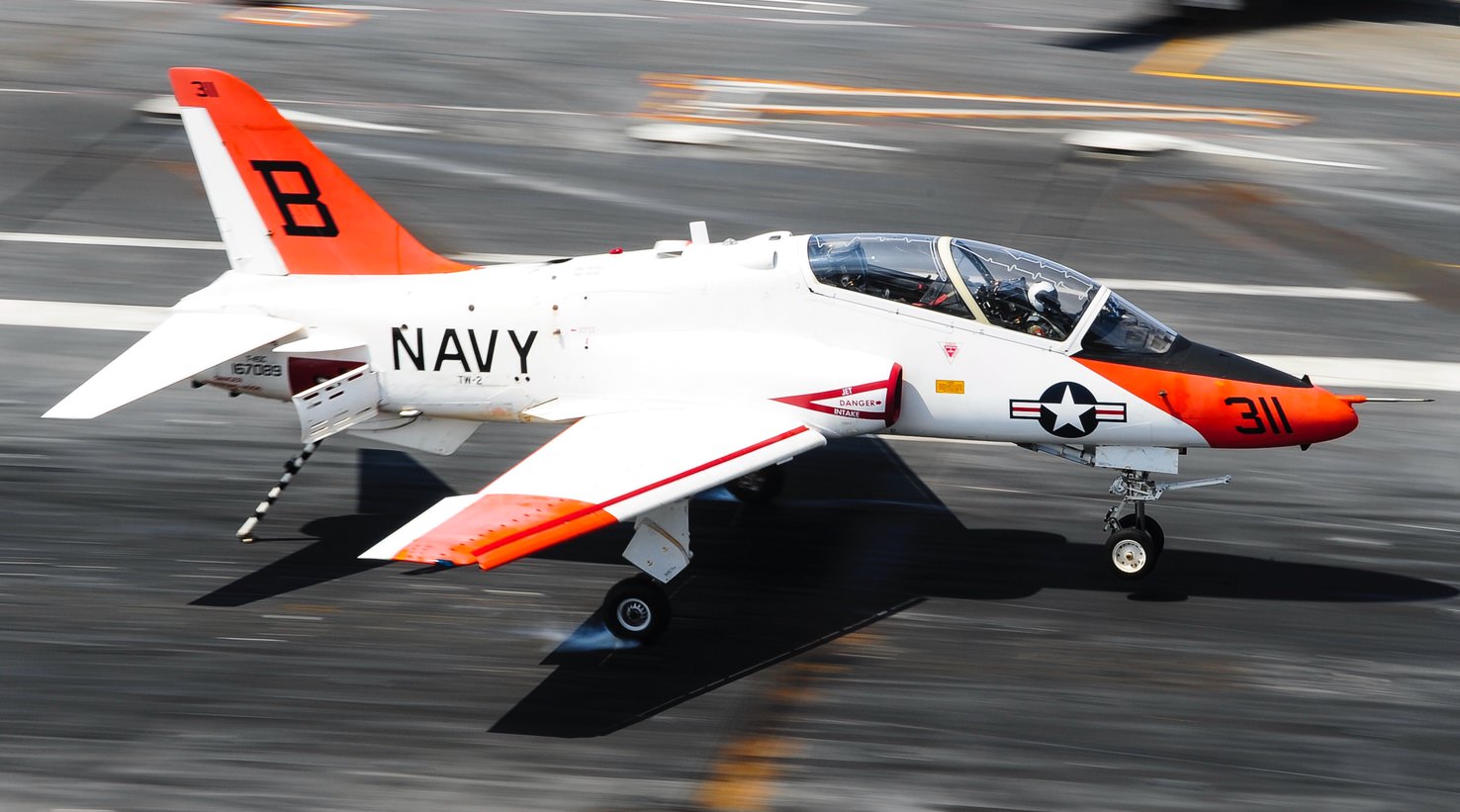Price: $29.95
- 1 magazine, 14 manuals, & photos
- PDF contains 4,236 pages
- Content is keyword searchable
- Print a personal copy
- Pay via PayPal or Credit Card
- International orders welcome!
- Download files upon payment
July 1989
- A-10 Close Support
- Dyna-Soar – Also Ran in the Race for Space
- Navy Wings of Gold
Manuals & Photos
- T-45A NATOPS Flight Manual
- T-45A NATOPS Flight Manual Changes
- T-45AC Performance Charts
- T-45AC Pocket Checklist Changes
- T-45C Advanced NFO Strike Procedures
- T-45C NATOPS Flight Manual 2000
- T-45C NATOPS Flight Manual 2007
- T-45C Pilots Pocket Checklist Changes
- T-45 Weapons Strike
- T-45 Aerodynamics Workbook
- T-45 Carrier Qualification Flight Procedures
- T-45 Familiarization
- T-45 Out of Control Flight
- McDonnell-Douglas T-45 TS Brochure
- Over 90 T-45 Goshawk photos
McDonnell-Douglas T-45 Goshawk
T-45A Specifications
Variants
Cutaway
Videos
General Characteristics
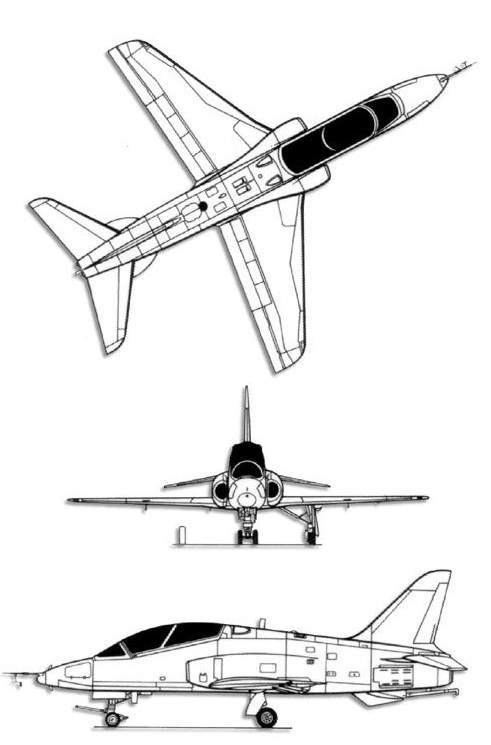
- Crew: 2
- Length: 39 ft 4 in (11.99 m)
- Wingspan: 30 ft 9.75 in (9.3917 m)
- Height: 13 ft 6 in (4.11 m)
- Wing area: 190.1 sq ft (17.66 m2)
- Airfoil: root: Hawker 10.9%; tip: Hawker 9%
- Empty weight: 9,394 lb (4,261 kg)
- Gross weight: 12,750 lb (5,783 kg)
- Max takeoff weight: 13,500 lb (6,123 kg)
- Fuel capacity: 432 US gal (360 imp gal; 1,640 l) / 3,159 lb (1,433 kg) internal fuel (2,893 lb (1,312 kg) – early production aircraft), with provision for 2x 156 US gal (130 imp gal; 590 l) drop tanks underwing
- Powerplant: 1 × Rolls-Royce Turbomeca F405-RR-401 turbofan engine, 5,527 lbf (24.59 kN) thrust de-rated (nominal thrust 5,845 lbf (25,999.86 N))
Performance
- Maximum speed: 543 kn (625 mph, 1,006 km/h) at 8,000 ft (2,438 m), M0.84 at 30,000 ft (9,144 m)
- Carrier launch speed: 121 kn (139 mph; 224 km/h)
- Approach speed: 125 kn (144 mph; 232 km/h)
- Never exceed speed: 575 kn (662 mph, 1,065 km/h) / M1.04 design dive limit at 3,281 m (10,764 ft)
- Range: 700 nmi (810 mi, 1,300 km)
- Ferry range: 700 nmi (810 mi, 1,300 km)
- Service ceiling: 42,500 ft (13,000 m)
- g limits: +7.33 –3
- Rate of climb: 8,000 ft/min (41 m/s) at sea level
- Time to altitude: 30,000 ft (9,144 m) in 7 minutes 40 seconds
- Wing loading: 346.7 lb/sq ft (1,693 kg/m2)
- Thrust/weight: 0.41
- Take-off distance to 50 ft (15 m): 3,610 ft (1,100 m)
- Landing distance from 50 ft (15 m): 3,310 ft (1,009 m)
Armament
- Usually none: One hardpoint under each wing can be used to carry practice bomb racks (can carry up to 12 Mk-76 practice bombs), rocket pods, or fuel tanks. A centerline hardpoint can carry a cargo pod for crew baggage.
Avionics
- Smiths Industries, Ltd. AN/USN-2(V) Standard Attitude Heading and Reference System, later replaced by the BAE/Marconi AN/ASN-180 Navigation Guidance System
- Rockwell Collins AN/ARN-144 VHF Omnidirectional Radio Range / Instrument Landing System
- Honeywell AN/APN-194 Radar altimeter
- Northrop Grumman AN/ASN-166 Inertial Guidance Set [1] Incorporates a Northrop Grumman (formerly Litton) LN-100G ring laser gyroscope, a Rockwell Collins Global Positioning System, and a Kalman filter
-
Communications Suite
- Rockwell Collins AN/ARC-182 UHF/VHF radio
- Honeywell AN/APX-100 identification friend or foe system
- T-45A
- Two-seat basic and advanced jet trainer for the US Navy and US Marine Corps
- T-45B
- Proposed land-based version which would have been basically a conventional Hawk furnished with a US Navy-spec cockpit and no carrier capability. The US Navy had wanted to procure the T-45B so that trainee pilots could benefit from an earlier training capability, but abandoned the idea during 1984 in favor of less-costly updates to the TA-4J and T-2C.
- T-45C
- Improved T-45A, outfitted with a glass cockpit, inertial navigation, and other improvements. All existing T-45As have been upgraded to the T-45C standard.
- T-45D
- Tentative designation for an envisioned upgrade of the T-45, potentially incorporating various manufacturing improvements and additional equipment, such as helmet-mounted displays.


